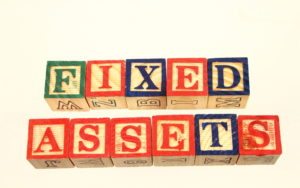Just like anywhere else in the world, when you’re using certain business items to help your business grow, there will always be wear and tear for using that item for a long time.
What is a fixed asset?
Fixed assets are items that your business uses for an extended period of time  (over a year).
(over a year).
Examples include:
- Computer Equipment,
- Vehicles,
- Machinery,
- Furniture,
- Land,
- Building(s),
- Software,
- Etc.
What the Japanese government defines as a fixed asset is similar to western accounting practices, but the capitalization limit is set by the government rather than the business itself. What this means is that your business cannot decide on its own whether to expense an asset.
How is it done in Japan?
Under JGAAP, only Straight-line depreciation is used to depreciate assets. Anything less than 100,000 JPY can be expensed in your books to avoid fixed asset taxation from the government.Although for SMEs with a capital/investment of 100M JPY or less, you can expense assets worth 300,000 JPY and below. Known as 少額減価償却資産 (small amount depreciable assets), in order to qualify you will need to become a blue form tax-filer. For most businesses, it can be very beneficial to be a blue form filer instead of a white form (by default, all businesses start out as white-form filers).
If you’re interested, you will need to submit your application to your local tax office.
- http://www.nta.go.jp/tetsuzuki/shinsei/annai/shinkoku/pdf/09.pdf (To apply for the blue form)
- https://www.nta.go.jp/foreign_language/Guidelines_pdf/06.pdf (Walkthrough in English)
- http://www.tax.metro.tokyo.jp/english/contact.html (Additional tax information)
Why depreciate an asset?
You wouldn’t want a big expense over 100,000 JPY (~$1,000) to hit your P&L affecting your profit for the month, right? Not sure if you or your employer is going to be happy to see a big negative number for that month (I know, I don’t). It would be better to spread out the costs evenly since you’re going to be using it every month for years anyway.
How should I classify this in Japan?
Booking 少額減価償却資産 (small amount depreciable assets)
If your business happens to be eligible to expense fixed assets under 300,000 JPY, there are two ways to do this:
A.)
- Purchase of the asset
| Debit | Credit | Comments |
| (Computer Equipment or 工具器具備品 (tool fixtures))250,000 | Purchased laptop | |
| (Cash) 250,000 |
2.)Immediately expensing the asset (or wait until the end of your fiscal year-end to do so)
| Debit | Credit | Comments |
| (Depreciation Exp.) 250,000 | Special depreciation of laptop according to 少額減価償却資産 (small amount depreciable assets) | |
| (Computer Equipment or 工具器具備品 (tool fixtures)) 250,000 |
B.) Other Alternative
| Debit | Credit | Comments |
| (Computer Expense or 備品費 (equipment expense))250,000 | Purchased laptop as a blue form filer | |
| (Cash) 250,000 |
Expensing assets worth 100,000 JPY and under
Just book it in the expense account you find most appropriate, or what matches the account description. Most Japanese tax accountants that have worked with overseas companies are aware that every company has a different way of classifying their accounts.
For instance, if a laptop was purchased for less than 100K JPY, I would either typically classify as a ‘computer expenses’ or ‘office expenses’ because it makes the most sense to the business, but a Japanese accountant may book it as 消耗品費 (supplies expense).
As an English native-speaker, that word is very vague to me because I mostly associate that account with stationery, but more than one online resource I’ve encountered in Japanese all advise to book it under 消耗品費 (supplies expense). But language differences aside, you’re still booking it as an expense, so as long as your tax accountant understands what you’re doing, expense it where it makes the most sense.



